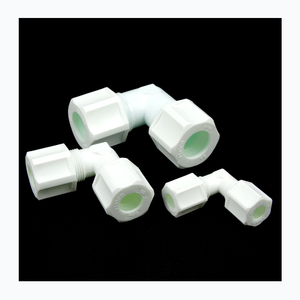Understanding Plastic Sanitary Fittings
Plastic sanitary fittings are integral components of modern plumbing systems, designed to ensure a seamless flow within pipes. These fittings come in various shapes and sizes, tailored to meet the diverse needs of both commercial and residential infrastructure. The primary function of plastic sanitary fittings is to connect sections of pipe or tubing, manage directional flow, and regulate the pressure within the system.
Types and Applications of Plastic Sanitary Fittings
Among the plethora of options, PVC sanitary fittings are prevalent due to their durability and resistance to a wide range of chemicals. These fittings are commonly employed in systems that handle water and other non-corrosive materials. In contrast, polypropylene sanitary fittings are known for their toughness and are often used in scenarios where chemical resistance is paramount. Specialized fittings, such as plastic tri clamp fittings, offer secure connections in systems that require frequent disassembly for cleaning and maintenance.
Features and Material Advantages
The choice of material in sanitary fittings is critical. PVC, for instance, is favored for its smooth interior walls, which minimize resistance and facilitate the uninterrupted flow of fluids. This feature is particularly evident in 4 x 4 x 2 PVC tee and 2 x 1 1/2 PVC DWV double sanitary tee configurations, which optimize flow in complex plumbing networks. Polypropylene fittings, on the other hand, boast resilience in various environmental conditions, making them suitable for a wide range of applications.
Components and Innovations in Design
Innovations in the design of plastic sanitary fittings have led to components like plastic sanitary tri clamp fittings, which enhance the integrity and ease of assembly in piping systems. Other essential components include P-traps, which are crucial in preventing odors by trapping water within the curve to block sewer gases. Pipe caps are also significant, serving to terminate lines or protect threads when pipes are not in use.
Selection Criteria for Plastic Sanitary Fittings
Selecting the appropriate plastic sanitary fitting requires an understanding of the system's needs. For instance, 10 PVC sanitary fittings may be suitable for larger scale operations, ensuring that the system can handle higher volumes of flow efficiently. The 5 PVC sanitary fittings might be more appropriate for smaller installations or domestic use. The conveyed fluid's properties are also a determining factor, as they dictate the required resistance characteristics of the fittings.
Conclusion
In conclusion, plastic sanitary fittings are a fundamental aspect of piping systems, with a variety of types like PVC sanitary pipe fittings and PVC tri clamp fittings available to suit different applications. While selecting these components, it is essential to consider the specific requirements of the system, including the type of fluid, flow rate, and environmental conditions. The right fitting not only ensures functionality but also contributes to the longevity and reliability of the plumbing infrastructure.











































 浙公网安备 33010002000092号
浙公网安备 33010002000092号 浙B2-20120091-4
浙B2-20120091-4